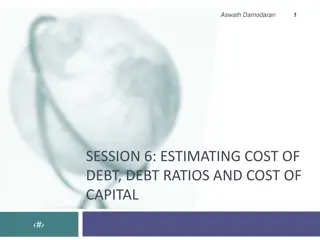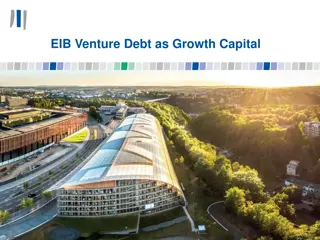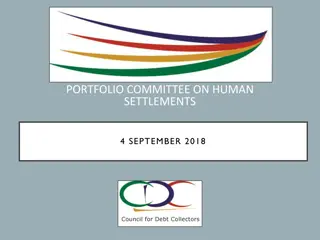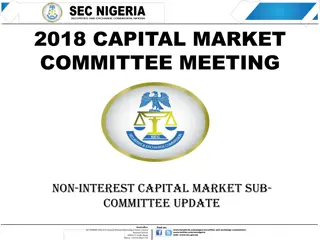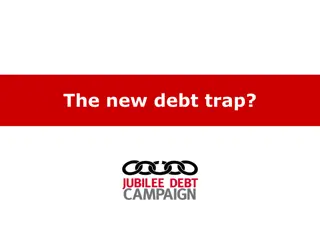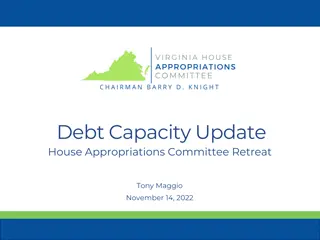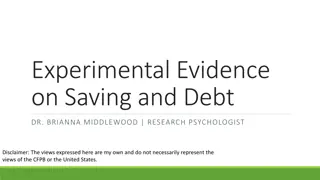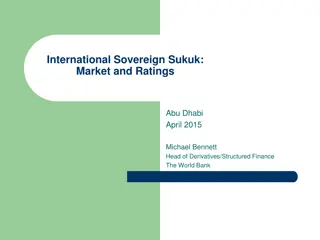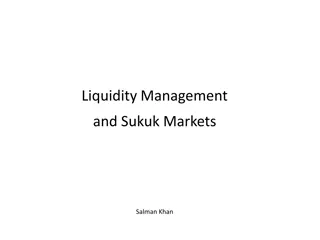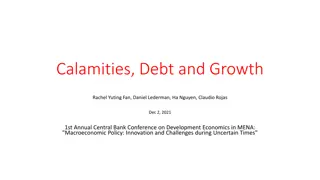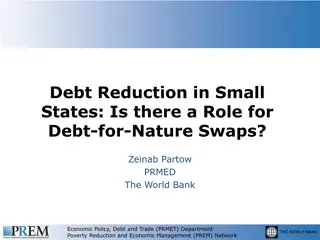Funding Growth without Debt: The Case for Risk-Sharing Sukuk
The challenge of financing development infrastructure, the need for sustainable solutions, and the role of risk-sharing contracts in Islamic finance to address the debt dilemma and fund growth and development.
Download Presentation

Please find below an Image/Link to download the presentation.
The content on the website is provided AS IS for your information and personal use only. It may not be sold, licensed, or shared on other websites without obtaining consent from the author.If you encounter any issues during the download, it is possible that the publisher has removed the file from their server.
You are allowed to download the files provided on this website for personal or commercial use, subject to the condition that they are used lawfully. All files are the property of their respective owners.
The content on the website is provided AS IS for your information and personal use only. It may not be sold, licensed, or shared on other websites without obtaining consent from the author.
E N D
Presentation Transcript
Funding Growth without Debt: The Case for Risk Sharing Sukuk Obiyathulla Ismath Bacha INCEIF, Malaysia presentation at Brunei Darussalam Islamic Investment Summit (BIIS 2017) 2nd and 3rdAugust 2017 Jerudong, Brunei Darussalam
Introduction The financing of development infrastructure remains a challenge for developing and emerging economies Infrastructure projects typically require heavy upfront investment. Funding such infrastructure has to depend on either foreign borrowing by the government or bringing in a private partner who can help raise the funds Experience shows that neither of these provides a sustainable solution Yet, the need for development infrastructure continues unabated. The world now appears to have worked itself into a corner. Many nations have hit very high levels of debt and need to deleverage.
Introduction The World Bank estimates: - 20% of the world s population, 1.3 billion people have no access to electricity, - 800 million lack access to clean water, - close to 40% of the world is in need of adequate sanitation - at least a billion people are in need of all-weather roads. World Bank estimates funding need of at least USD$1 trillion per year The McKinsey Global estimates a total need of USD$57 trillion by 2030.
For many developing countries, development without debt may not be possible, for unlike private entities, which can raise funding through either debt or equity, governments cannot issue equity. So, debt financing is often the only alternative. - increases leverage, debt capacity - macro vulnerability, rate risk, contagion - currency exposure However, Rogoff (2010) shows that every one of the last 100 financial crises had a single root cause, excessive debt. Key Challenge how do we fund growth/development without debt??
The Risk Sharing Contracts of Islamic Finance Islamic finance provides alternatives of a risk-sharing nature. Mudarabah and Musharakah are essentially quasi equity contracts. Evidence of use by Italian city states to fund the European renaissance. Later resurfaced as venture capital financing in Silicon Valley. In both cases, the risk sharing philosophy of Mudarabah was used but the contract was tweaked to introduce controls.
Funding type and resulting project risk profile Funding type and resulting project risk profile Mudarabah results in no increase in financial leverage, reduces vulnerability to external shocks and comes with an inbuilt stabilizer. The risk-sharing, terminality and limited dilution are important advantages that the Mudarabah has relative to debt. Lower risk as project risk is shared with new shareholders Project risk is shared New equity Higher risk as (1) the same group of existing shareholders have to take on new project risk + (2) financing risk (leverage) Project risk is transfered to equity holders New Project [Risk] debt The seeming advantage that debt has over equity in the debt-equity tradeoff is substantially altered when Mudarabah financing comes into the picture. Mudarabah sukuk Lower risk as shared with sukuk holders. Maximum risk limited to % of investment Project risk is shared
Issues and Challenges The determination of net profits can be an issue. Prior agreements on how costs are allocated, what costs are allowed and which ones disallowed, how gross and net profits are to be determined etc. The use of industry average costs, industry ratios and best practices can protect the sukukholders. The key is to be transparent of the methodology to be used. High and low quality projects emanating from the same country would have different required returns.
Issues and Challenges Relative to debt, the proposed risk-sharing instruments are riskier for investors/sukukholders but less risky for the issuing government. There are things that an issuing government can do to minimize its costs. The use of embedded options, puts exercisable by sukukholders under certain conditions and calls exercisable by the government, can help to reduce risks and therefore, costs. The use of contract for differences (CFDs) can substantially reduce risks and required returns/costs.
Conclusion Crises arising from excesses with debt have not only become more frequent but extremely costly. Financial losses aside, the human misery and social unrest exact huge costs on society. However, deleveraging will mean cutbacks and sacrificing new growth. The risk sharing instruments proposed above, offer a way out. It allows continued funding of development without increase in debt. Improved macroeconomic stability arising from the avoidance of pro cyclical policies and the absence of trigger points for financial distress such as sudden stops.
Returns anchored in real sector returns; not only be more stable but higher relative to the rates of debt instruments A new asset class. Avoid contagion. Can promote financial inclusion. As a risk-sharing instrument it raises the threshold of prudence in evaluating projects for investment at both ends, the investor and obligor. This improved efficiency should reduce moral hazard and lead to better allocation of resources. A final caveat is the need for good governance, transparency, accountability, rule of law and the enforceability of contracts.
INCEIF, The Global University of Islamic Finance Lorong Universiti A, 59100 Kuala Lumpur, Malaysia








